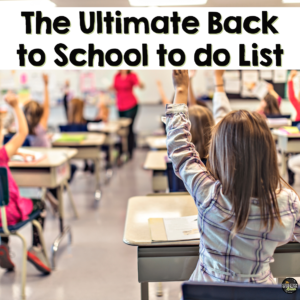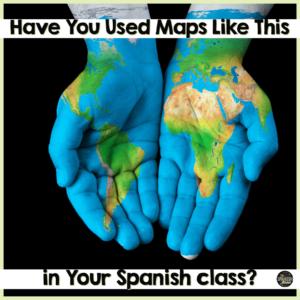My Spanish textbook has two whole chapters dedicated to “la comida.” I bet yours does too. And it comes with huge lists of food for my students to memorize (things like “la pizza”) but certainly doesn’t include any traditional foods. My students groan when they see that long list. “But profe, I don’t even like peas so why do I need to know how to say los guisantes?” My students like the topic of food and which foods they prefer but we also run into the problem of their favorite dish, “la lagosta,” not being on the vocab list. It was a mess. And after a while, it was boring.
What is the purpose of simply teaching students how to say food items in Spanish? To order in a restaurant? For me that felt a little short sighted. Couldn’t we be doing SO much more with this topic? Couldn’t we get our students engaged, excited, and curious about this topic? Absolutely!
Students positively love learning about things that are real. They desperately seek purpose to their learning. Haven’t you heard “but why are we learning this? When will I ever need this in real life?”
So let’s get real.
Having access to food and nutrition is a challenge that many face both here in our local communities and in the Spanish speaking world. Food deserts cause enormous strain on a community and gravely impact health. Did you know that some communities in Mexico have passed laws to restrict minors’ access to junk food to reduce these risks? How would your students react upon learning that their peers can’t buy candy? My students were simultaneously outraged and curious.
Learning about the negative impacts of access to food wasn’t enough for my students. Their indignation led them to question why certain communities didn’t have access to healthy foods and what could be done about it. Kids love to make positive change. So we looked at some solutions like community gardens and farmer’s markets. We discovered some nonprofits that specifically work with communities that are food deserts.
They are so engaged!
So then my students were hooked, excited, and desperate to do something with their new knowledge. To build cross cultural connections, we researched healthy food options in our local community, created advertisements, and created a bulletin board in the hallway to help educate our school about healthy choices. Their expertise extended beyond the walls of our classroom. It was empowering. It started important discussions and my students were the experts.
Interested in finding out the step by step process of our unit on access to food? This post breaks it down. All of the activities, projects, and reading passages.
Have you incorporated social justice into your classroom? I’d love to hear all about it! Let’s connect on Instagram or Facebook and tell me about your experience.





No Comments